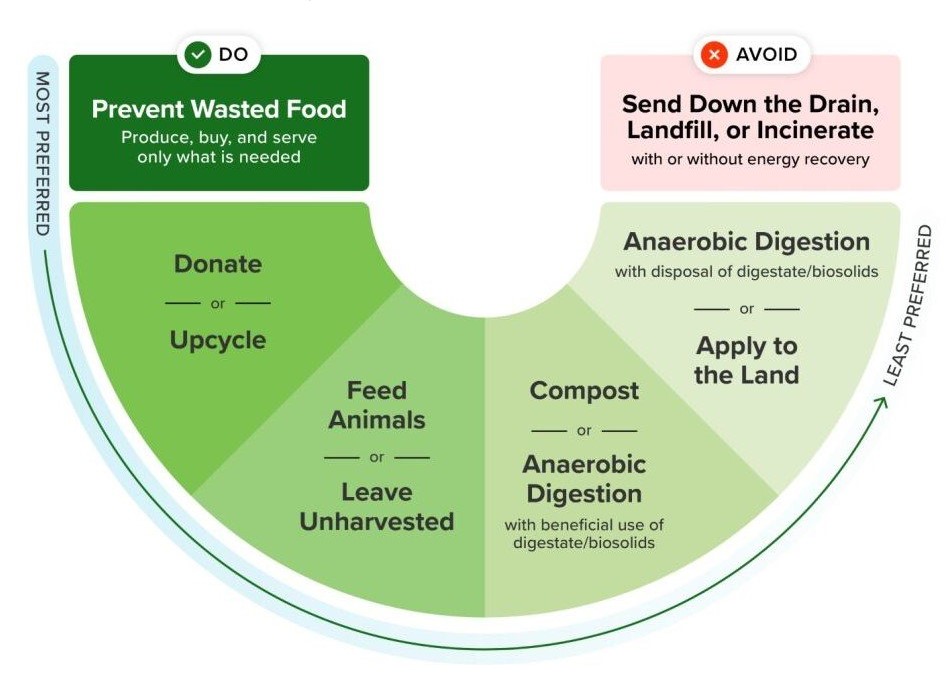Guest Post by Huma Tariq, 2023-2024 Sustainability Leadership Fellow, and Ph.D. Student in the Department of Soil and Crop Sciences at Colorado State University
Growing up in an indigenous mountain community in Pakistan, there was an unspoken rule at our dinner table: leaving a single morsel of food behind was simply not an option. This practice goes beyond mere culinary tradition; it stands as a testament to our profound respect for food, transcending its role as mere sustenance into a medium for storytelling and a way to savor precious moments. Amusing stories passed down through generations weave myths around this practice — folklore suggests beauty graces those who savor every bite and leave their plates clean.
Upon venturing into lands of abundance, the scale of casual food wastage I observed was profoundly unsettling. The contrast between my upbringing, where food was revered, and the extravagant food disposal I witnessed later in life left me taken aback.
In the face of climate change and environmental degradation, the global agricultural sector is grappling with unprecedented challenges. We find ourselves in a race against time, developing new techniques and technologies to feed our expanding population. Yet, amid these advancements, we often overlook the simplest and most immediate solution: reducing food waste.
Food waste occurs at every stage of the production and supply chain, from agricultural fields to supermarket shelves to consumer households. Globally, one-third of all food for human consumption, equivalent to 1.3 billion tons is wasted annually [1] out of this, 17% occurs at the consumer level [2]. However, it’s not merely the food being wasted; it’s also the countless resources that are poured into producing it. Roughly a quarter of the freshwater utilized in worldwide food production ends up being wasted because the food it helps grow is ultimately not consumed [3]. Imagine the sheer futility of the greenhouse gas emissions stemming from the production of that wasted food— hurting the planet for no reason.
These alarming statistics highlight the urgent need for action to combat food waste. Is there a quick fix to halt the menace of food waste? Unfortunately, no. A wide array of policies is necessary to effectively address the various causes of food waste [4]. A comprehensive “farm to fork” approach encompassing every stage of food production and distribution is essential [5]. However, there are several easily attainable solutions that can be implemented by retailers and consumers to reduce food waste.

It’s about time supermarkets in developed countries reevaluate their fixation on perfectly shaped produce. Insisting on uniformity leads to wasteful discarding of items that may not look flawless but are entirely edible. Surprisingly, consumer surveys reveal a different perspective: people are willing to pay for slightly imperfect produce as long as the taste and nutrition isn’t compromised [6].
Another viable measure involves redirecting unsold food to alternative sources. Take France as an example, where supermarkets are legally bound to donate unsold food to charities or animal; failure to comply can lead to fines [7]. Moreover, Italy discourages food waste by providing tax benefits to supermarkets [7]. Embracing such strategies can considerably reduce food waste, creating more sustainable agriculture and leaving a positive impact on communities.
At the consumer level, several proactive measures can significantly curb food waste. The first step begins in our kitchens. Encouraging practices like meal planning, portion control, and innovative use of leftovers can drastically reduce the amount of food we toss away. It’s about being mindful of what we buy and how we consume it, making the most of every ingredient. Another important step is to support local and sustainable agriculture, which not only reduces environmental impacts but also fosters responsible food production practices.
Lastly, education is key. By spreading awareness about the environmental and social impacts of food waste, we can ignite a collective consciousness [1]. When we understand the consequences of our actions, we’re more likely to make mindful choices, fostering a culture of responsible consumption.
So how about starting with a simple act: cleaning our plates? Who knows, the ancient myths from distant lands might hold a grain of truth.
References:
[1] J. Gustavsson, C. Cederberg, and U. Sonesson, Global Food Losses and Food Waste. 2011.
[2] UNEP, Food Waste Index Report 2021. 2021.
[3] M. Kummu, H. de Moel, M. Porkka, S. Siebert, O. Varis, and P. J. Ward, “Lost food, wasted resources: Global food supply chain losses and their impacts on freshwater, cropland, and fertiliser use,” Sci. Total Environ., vol. 438, pp. 477–489, 2012, doi: 10.1016/j.scitotenv.2012.08.092.
[4] M. K. Muth et al., “A systems approach to assessing environmental and economic effects of food loss and waste interventions in the United States,” Sci. Total Environ., vol. 685, pp. 1240–1254, 2019, doi: 10.1016/j.scitotenv.2019.06.230.
[5] J. Lundqvist, C. de Fraiture, and D. Molden, “SIWI Policy Brief: Saving Water: From Field to Fork,” Stock. Int. Water Inst., p. 36, 2008, [Online]. Available: http://www.siwi.org/publications/.
[6] T. Stuart, Waste: Uncovering the global food scandal. Penguin Books: London, 2009.
[7] J. Schinkel, “Review of policy instruments and recommendations for effective food waste prevention,” Proc. Inst. Civ. Eng. Waste Resour. Manag., vol. 172, no. 3, pp. 92–101, 2019, doi: 10.1680/jwarm.18.00022.






